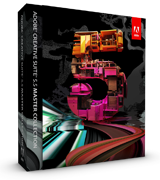jQuery 1.8RC1 is here. Yep, RC as in Release Candidate. The good news is that this release is a few days later than I expected it to be. It’s good news because we received several valuable but last-minute bug reports we were able to fix. Many thanks to those of you who took the time to try out Beta 2 with your code, and especially to those who found and reported bugs.
Now I know there are a lot of you out there thinking, “Gee whiz, nobody ever lets me find bugs.” Well, here’s your chance to be a hero to the jQuery community. In this Release Candidate we may have taken some working features and inserted problems so obscure that even we don’t know where they are. Please find them! Just grab the code from here:
http://code.jquery.com/jquery-1.8rc1.js
Try out this Release Candidate code wherever you use jQuery, and let us know about any issues you find via the bug tracker. Be sure to mention you’re testing against jQuery 1.8 RC1, and please create a test case that shows the bug using jsFiddle.net so we can reproduce it and investigate. You can use the “jQuery (edge)” choice for framework in jsFiddle, which represents the most up-to-date code.
Oh, and did I mention this is a Release Candidate? Yeah, I did. Who knows if there will ever be a jQuery 1.8.1? If you find a bug after we release jQuery 1.8, it could be six months before it’s fixed. Six months of misery, all because you didn’t test the Release Candidate! One and a half women could make a baby while you’re waiting for that critical bug fix! For your own sake, please try it out!
jQuery 1.8rc1 Change Log
The current change log of the 1.8rc1 release.
Ajax
- #8205: JSONP random result is causing memory leak in IE8
- #8653: jQuery.param outputs "null" and "undefined" in the query string
- #9399: Deprecate jqXHR.success and jqXHR.error
- #10285: evalScript rcleanScript replacement fails in IE8
- #10524: jQuery.fn.load does not merge data parameter with jQuery.ajaxSetup
- #10944: $.ajax does not always return an object implementing the Promise interface
- #11013: Deprecate use of Deferred/Promise with sync $.ajax
- #11402: evalScript function fails with error error 80020101 in IE
- #11743: jQuery silently ignores errors during script tag ajax request in $.appendTo()
- #11778: Cached XHR requests should still resolve asynchronously
- #12122: jQuery.ajax() async deprecate use with $.Deferred
Attributes
- #11153: jQuery 1.7 Strips Carriage Returns in IE 8
- #11212: Sizzle.getText converts unbreakable space into whitespace on IE
- #11547: XML DOM .removeAttr() doesn't remove cased attributes
- #11962: Standardize getter return values for empty sets.
- #12127: Clone does not correctly copy checked state in IE10
Build
- #11767: Support custom build without effects
- #11789: Update README to describe grunt build system
- #11856: modularize dimensions
- #11857: modularize css
- #11865: modularize offset
- #11965: Create deprecated.js to contain as much of the deprecated stuff as possible
Core
- #10657: Deprecate jQuery#size() in favor of jQuery#length
- #11290: selector interpreted as HTML
- #11470: Adding a builtin readyP promise
- #12018: $(document).ready() fires too early in IE8
- #12026: Let $(html, props) use any jQuery.fn method
Css
- #10373: `document.defaultView` => `window`
- #10413: width, innerWidth, innerHeight, outerWidth, outerHeight are inaccurate for a "box-sizing: border-box" child of hidden parent
- #10679: CSS3 vendor prefix support
- #11004: getWH incorrectly removes padding and border width when box-sizing is border-box
- #11787: Remove jQuery.curCSS
- #12088: Webkit now returning percentages for more getComputedStyle properties
- #12148: hide event don't fire when toggle
Data
- #7579: jQuery.data() truncates numbers taken from data-xxx attributes
- #10589: Remove $.fn.data("events")
Deferred
- #11010: Make Deferred.then == Deferred.pipe like Promise/A
- #11011: Allow traditional options object for $.Callbacks flags
- #11736: Remove Deferred .isResolved() and .isRejected()
- #11749: Preserve context objects when multiple Deferred object are passed to $.when()
Dimensions
- #6724: wrong $(window).height() in mobile safari (iphone)
- #10877: Make outerWidth/Height a setter
- #11293: Reading width or outerWidth of empty TDs alters columns width values
- #11604: Switch $(elem).width(-val) from no-op to $(elem).width(0)
- #11724: $(document).height() changed in Firefox 12
Effects
- #7109: animate width starts with invalid width on webkit
- #7157: Animation callback shows element is still ":animated"
- #8387: flickering problem with jQuery 1.5 hide/show issue with inline and inline-block elements on webkit browsers
- #8627: .animate() fails on letterSpacing in IE (regression in 1.5.1)
- #8892: Callback is raised before objects are shown with fadeIn() and jQuery.fx.off = true
- #9217: javascript error in IE8 when animating element is removed before animation finishes
- #9505: animate() issue when mixing percentages and pixels in WebKit
- #11635: Explicit overflow:auto is overridden by inline overflow:hidden during animation
- #11755: animate and it aliases should not use :hidden selector
- #11797: New animation related events
- #11854: percentage animations jump to end
- #11971: Animating background-position fails in IE8
- #11999: Incremental animation on fixed div does subtraction instead of addition in Chrome.
- #12117: overflow hidden not properly set when animating to 0 height or width
- #12150: border-spacing property accumulates when rows are shown and hidden
Event
- #8545: Leak with events in IE
- #10067: Firing $.ready on document.readyState === 'interactive' too
- #10895: The doScrollCheck ie hack in bindReady degrades ie7 performance for no reason whatsoever
- #11101: Deprecate "exclusive" events option from trigger method
- #11315: Problems with delegate() and :first in nested elements with equivalent classes
- #11328: Ctrl key doesn't set event.metaKey to true on Windows
- #11382: Mouseenter doesn't fire on a disabled input element
- #11500: Bug : "change" event handler not executed when triggered manually on IE7 & IE8
- #11621: Triggering a event on document doesn't bubble to window
- #11718: Deprecate .data() events
- #11719: Deprecate .bind("ready") event
- #11731: Deprecate "hover" pseudo-event
- #11733: Deprecate .load(), .unload(), and .error() methods
- #11764: Allow delegated non-native events on disabled elements
- #11786: Deprecate .toggle( handler, handler, … ) signature
Manipulation
- #8894: appendTo() and alike methods called after clone() returns incorrect jQuery set in IE
- #10324: Clone does not copy innerHTML of object element in IE9
- #11231: Append, Prepend, After, Before should accept an array as first argument
- #11338: Inconsistent behavior with .replaceWith() and disconnected nodes.
- #11528: ie8 serialization bug with .html() also hitting html5 tags
- #11566: node.append et al. does not work when node is a DocumentFragment
- #11617: Define a $.parseHTML method for creating HTML fragments
- #11809: Memory leak in .text(val) setter?
- #11898: prevAll() with a complicated :not() selector returns results in wrong order
- #12132: IE10 bug when cloning an object element without a parentNode
Offset
Selector
- #3778: selector matching issues
- #5568: Selectors behave differently with comments tags on FF/IE
- #7596: xpath selector attribute name with brackets [] fails
- #8473: In IE9rc *[tabIndex] select all elements without tabindex also
- #8906: .(prevAll('span:has(input,select,textarea)')
- #9400: Deprecate :text, :radio, :checkbox, etc. selector extensions
- #9810: Rewrite Positional Selector Logic
- #10003: Regression/BC break from #6963
- #10074: Chaining two [] selector with :first not working
- #10499: :nth-child() inside :has() treated as if outside it
- #10570: :text selector throws an error in IE7 when there is a cross domain iframe on the page
- #10697: Sizzle revamp
- #10799: Inconsistent results with [name="name"] selectors (also breaks .has)






